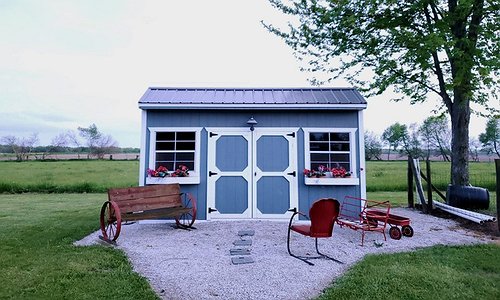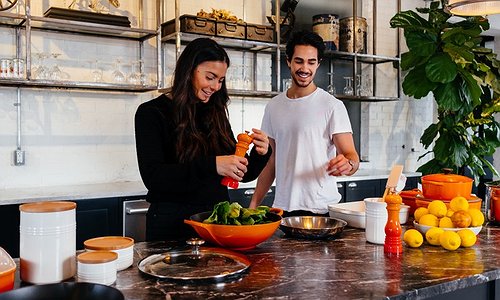How to save water in your garden during the height of summer
We all know that, during the hot summer months, our gardens just get thirstier and thirstier. For those who are not in drought hit areas and are lucky enough to be able to drag out the hosepipe to provide some relief to their wilting plants, the water bill creeps ever upwards. For those in drought-stricken areas where hosepipes are a no-no, it is even more difficult to deal with stressed plants. Our gardening team at Granny Mouse would like to offer some tips on looking after your garden whilst, also, saving precious water.
1. Help pot plants stay cool
If you have plastic or terracotta pots with plants in them, these plants are vulnerable to overheating. If they are placed in saucers and the saucers are filled with water, this can lead to root rot and even encourage mosquito breeding. Instead, fill the saucers with sand and keep the sand moist. The roots will then stay cool and your plants will thank you for it!
2. Water at the right time of day
When watering your garden, be sure to water your plants at the right time of day. Watering during the heat of the day means that the water you provide is often wasted as it quickly evaporates. That’s why it’s best to water plants when it’s slightly cooler - either early in the morning or late afternoon before dusk. But, if you are watering in the late afternoon, allow some time to give foliage time to dry out before sunset, to avoid mildew and other fungi from growing and attacking your leaves.
3. Check on your hoses
If you have many hoses and irrigation systems around the home, be sure to check them for holes and damage. The leaks will of course lead to excess water usage. If your hose is getting a little old and springing leaks here, it’s best to buy a new one. When you’re finished using your hoses, be sure to turn them off at the tap to stop them from continuing to run and possibly leaking water and store them neatly away from direct sunlight to prevent the plastic from degrading and springing new leaks!
4. Use the right soil
Be sure to check on your soil and add nutrients to it if you need to. Your soil needs to have rich, organic compost added to it which will help trap moisture and encourage healthy growth of your plants. This means then that you shouldn’t have to water your plants as much or as often. Add mulch to your gardens to reduce evaporation from the surface of the soil whilst also stopping weeds from taking over your garden beds and stealing the precious water and moisture from your other plants.
5. Choose heat tolerant vegetables/plants
If you want to continue growing vegetables during the hot months, be sure to choose veggies and plants that are both heat and drought tolerant. There are many different vegetables and plants such as lavender, sage, thyme, rosemary, and asparagus (once established) that can tolerate hot climates and will still grow very well. This means that they’ll be able to withstand conditions that may be prone to them in the hotter months if you can’t water them as often as you’d like to.
6. Save household water for your garden
Install water tanks close to house downpipes. This is a perfect way to water outdoor plants and vegetables and to both conserve water and your municipal bills. You can also re-direct the runoff when you backwash your pool into thirsty flower beds. Water that runs down the drain in bathrooms while you wait for the water to warm up can be collected and used to water pot plants.
7. Wash your car on the lawn
One of the oldest tricks in the book is to hand wash your car on your lawn. By doing this you’ll be able to save water (by hand washing using a bucket as opposed to just hosing your car down), plus you’ll be able to water your lawn and keep it healthy during hot summer months. When you do hose your car down, you’ll also be able to splash some water on any surrounding plants.
8. Provide water to fauna
Although this may not sound like a water saving idea, it can in turn help your garden to need less water over time. Provide water to birds, bees, butterflies, and other insects by leaving some out for them in the hot months. You can install a birdbath in your yard if you have room. Not only will you be helping the birds to stay cool and hydrated, but you’ll have a lovely sight of birds in your yard. These birds will help keep your garden healthy and happy and aid in pollination. Water features can also create microclimates, which aids in helping the area stay cool, provides moisture and helps plants and veggies to cope with the heat.
9. Plan your planting
If you’re planting vegetables and plants, it’s a good idea to group those with similar watering requirements together. Create feature gardens using indigenous plants such as aloes which are fine-tuned by Mother Nature to cope with hot summers and dry spells. Exotic plants that are used to far wetter climates are not always suited to South Africa no matter how pretty they seem. Instead of planting veggies in rows, another idea is to plant them together in almost squared-off sections. Keep vegetables that require lots of water together in one section, and those who demand less watering in another section. That way you can focus your watering schedule on those that need it without worrying about overwatering plants that require less water.
Submitted by: Steven J. Brown / S & A Marketing



